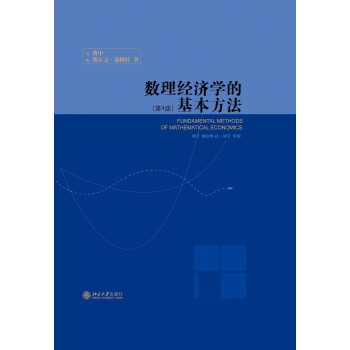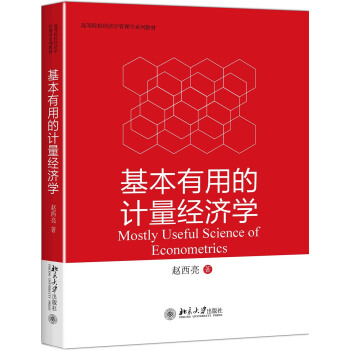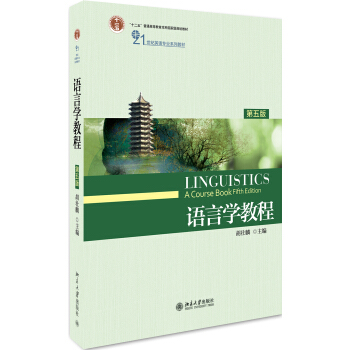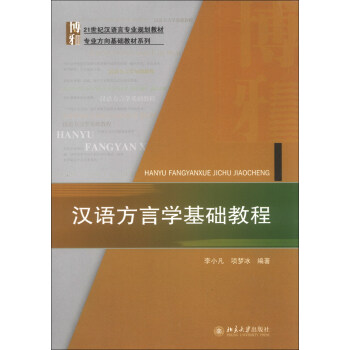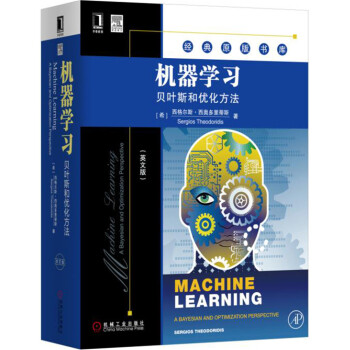

具體描述
內容簡介
本書對所有主要的機器學習方法和新研究趨勢進行瞭深入探索,涵蓋概率和確定性方法以及貝葉斯推斷方法。其中,經典方法包括平均/小二乘濾波、卡爾曼濾波、隨機逼近和在綫學習、貝葉斯分類、決策樹、邏輯迴歸和提升方法等,新趨勢包括稀疏、凸分析與優化、在綫分布式算法、RKH空間學習、貝葉斯推斷、圖模型與隱馬爾可夫模型、粒子濾波、深度學習、字典學習和潛變量建模等。全書構建瞭一套明晰的機器學習知識體係,各章內容相對獨立,物理推理、數學建模和算法實現精準且細緻,並輔以應用實例和習題。本書適閤該領域的科研人員和工程師閱讀,也適閤學習模式識彆、統計/自適應信號處理和深度學習等課程的學生參考。
作者簡介
SergiosTheodoridis希臘雅典大學信息係教授。主要研究方嚮是自適應信號處理、通信與模式識彆。他是歐洲並行結構及語言協會(PARLE-95)的主席和歐洲信號處理協會(EUSIPCO-98)的常務主席、《信號處理》雜誌編委。
KonstantinosKoutroumbas1995年在希臘雅典大學獲得博士學位。自2001年起任職於希臘雅典國傢天文颱空間應用研究院,是國際知名的專傢。
目錄
Contents
Preface.iv
Acknowledgments.vv
Notation.vfivi
CHAPTER 1 Introduction .1
1.1 What Machine Learning is About1
1.1.1 Classification.2
1.1.2 Regression3
1.2 Structure and a Road Map of the Book5
References8
CHAPTER 2 Probability and Stochastic Processes 9
2.1 Introduction.10
2.2 Probability and Random Variables.10
2.2.1Probability11
2.2.2Discrete Random Variables12
2.2.3Continuous Random Variables14
2.2.4Meanand Variance15
2.2.5Transformation of Random Variables.17
2.3 Examples of Distributions18
2.3.1Discrete Variables18
2.3.2Continuous Variables20
2.4 Stochastic Processes29
2.4.1First and Second Order Statistics.30
2.4.2Stationarity and Ergodicity30
2.4.3PowerSpectral Density33
2.4.4Autoregressive Models38
2.5 InformationTheory.41
2.5.1Discrete Random Variables42
2.5.2Continuous Random Variables45
2.6 Stochastic Convergence48
Problems49
References51
CHAPTER 3 Learning in Parametric Modeling: Basic Concepts and Directions 53
3.1 Introduction.53
3.2 Parameter Estimation: The Deterministic Point of View.54
3.3 Linear Regression.57
3.4 Classification60
3.5 Biased Versus Unbiased Estimation.64
3.5.1 Biased or Unbiased Estimation?65
3.6 The Cramér-Rao Lower Bound67
3.7 Suf?cient Statistic.70
3.8 Regularization.72
3.9 The Bias-Variance Dilemma.77
3.9.1 Mean-Square Error Estimation77
3.9.2 Bias-Variance Tradeoff78
3.10 MaximumLikelihoodMethod.82
3.10.1 Linear Regression: The Nonwhite Gaussian Noise Case84
3.11 Bayesian Inference84
3.11.1 The Maximum a Posteriori Probability Estimation Method.88
3.12 Curse of Dimensionality89
3.13 Validation.91
3.14 Expected and Empirical Loss Functions.93
3.15 Nonparametric Modeling and Estimation.95
Problems.97
References102
CHAPTER4 Mean-quare Error Linear Estimation105
4.1Introduction.105
4.2Mean-Square Error Linear Estimation: The Normal Equations106
4.2.1The Cost Function Surface107
4.3A Geometric Viewpoint: Orthogonality Condition109
4.4Extensionto Complex-Valued Variables111
4.4.1Widely Linear Complex-Valued Estimation113
4.4.2Optimizing with Respect to Complex-Valued Variables: Wirtinger Calculus116
4.5Linear Filtering.118
4.6MSE Linear Filtering: A Frequency Domain Point of View120
4.7Some Typical Applications.124
4.7.1Interference Cancellation124
4.7.2System Identification125
4.7.3Deconvolution: Channel Equalization126
4.8Algorithmic Aspects: The Levinson and the Lattice-Ladder Algorithms132
4.8.1The Lattice-Ladder Scheme.137
4.9Mean-Square Error Estimation of Linear Models.140
4.9.1The Gauss-Markov Theorem143
4.9.2Constrained Linear Estimation:The Beamforming Case145
4.10Time-Varying Statistics: Kalman Filtering148
Problems.154
References158
CHAPTER 5 Stochastic Gradient Descent: The LMS Algorithm and its Family .161
5.1 Introduction.162
5.2 The Steepest Descent Method163
5.3 Application to the Mean-Square Error Cost Function167
5.3.1 The Complex-Valued Case175
5.4 Stochastic Approximation177
5.5 The Least-Mean-Squares Adaptive Algorithm179
5.5.1 Convergence and Steady-State Performanceof the LMS in Stationary Environments.181
5.5.2 Cumulative Loss Bounds186
5.6 The Affine Projection Algorithm.188
5.6.1 The Normalized LMS.193
5.7 The Complex-Valued Case.194
5.8 Relatives of the LMS.196
5.9 Simulation Examples.199
5.10 Adaptive Decision Feedback Equalization202
5.11 The Linearly Constrained LMS204
5.12 Tracking Performance of the LMS in Nonstationary Environments.206
5.13 Distributed Learning:The Distributed LMS208
5.13.1Cooperation Strategies.209
5.13.2The Diffusion LMS211
5.13.3 Convergence and Steady-State Performance: Some Highlights218
5.13.4 Consensus-Based Distributed Schemes.220
5.14 A Case Study:Target Localization222
5.15 Some Concluding Remarks: Consensus Matrix.223
Problems.224
References227
CHAPTER 6 The Least-Squares Family 233
6.1 Introduction.234
6.2 Least-Squares Linear Regression: A Geometric Perspective.234
6.3 Statistical Properties of the LS Estimator236
6.4
前言/序言
PrefaceMachine Learning is a name that is gaining popularity as an umbrella for methods that have been studied and developed for many decades in different scientific communities and underdiffer entnames,such as Statistical Learning,Statistical Signal Processing, Pattern Recognition,Adaptive Signal Processing,Image Processing and Analysis,System Identification and Control,Data Mining and Information Retrieval,Computer Vision,and Computational Learning.The name“Machine Learning”indicates what all these disciplines have in common,that is,to learn from data,and thenmake predictions.What one tries to learn from data is their underlying structure an dregularities, via the development of a model,which can then be used to provide predictions.To this end,anumber of diverse approaches have been developed,ranging from optimization of cost functions,whose goal is to optimize the deviation between what one observes from data and what them odelpredicts,to probabilistic models that attempt to model the statistical properties of the observed data.The goal of this book is to approach the machine learning discipline in a unifying context, by presenting the major paths and approaches that have been followed over the years, without giving preference to a specific one. It is the author’s belief that all of them are valuable to the newcomer who wants to learn the secrets of this topic, from the applications as well as from the pedagogic point of view.As the title of the book indicates,the emphasis is on the processing and analysis front of machine learning and not on topics concerning the theory of learning itself and related performance bounds.In other words,the focusis on methods and algorithms closer to the application level.The book is the outgrowth of more than three decades of the author’s experience on research and teaching various related courses.The book is written in such a way that individual(orpairsof)chapters are as self-contained as possible. So,one can select and combine chapters according to the focus he/she wants to give to the course he/she teaches,or to the topics he/she wants to grasp in a first reading.Some guidelines on how one can use the book for different courses are provided in the introductory chapter.Each chapter grows by starting from the basics and evolving to embrace the more recent advances. Some of the topics had to be split into two chapters,such as sparsity-aware learning, Bayesian learning,probabilistic graphical models, and Monte Carlo methods.The book addresses the needs of advanced graduate, postgraduate,and research students as well as of practicing scientists and engineers whose interests lie beyond black-box solutions. Also,the book can serve the needs of short courses on specific topics,e.g.,sparse modeling, Bayesian learning, robabilistic graphical models,neural networks and deep learning.Most of the chapters include Matlab exercises,and the related code is available from the book’s website. The solutions manual as well as PowerPointlectures are also available from the book’s website.AcknowledgmentsWritingabookisaneffortontopofeverythingelsethatmustkeeprunninginparallel.Thus,writingisbasicallyanearlymorning,afterfive,andovertheweekendsandholidaysactivity.Itisabigeffortthatrequiresdedicationandpersistence.Thiswouldnotbepossiblewithoutthesupportofanumberofpeople—peoplewhohelpedinthesimulations,inthemakingofthefigures,inreadingchapters,andindiscussingvariousissuesconcerningallaspects,fromproofstothestructureandthelayoutofthebook.First,Iwouldliketoexpressmygratitudetomymentor,friend,andcolleagueNicholasKalouptsidis,forthislong-lastingandfruitfulcollaboration.ThecooperationwithKostasSlavakisoverthelastsixyearshasbeenamajorsourceofinspirationandlearningandhasplayedadecisiveroleformeinwritingthisbook.Iamindebtedtothemembersofmygroup,andinparticulartoYannisKopsinis,PantelisBouboulis,SimosChouvardas,KostasThemelis,GeorgePapageorgiou,andCharisGeorgiou.Theywerebesidemethewholetime,especiallyduringthedifficult
用戶評價
評分我一直覺得,機器學習的魅力在於它能夠用數學的語言描述和解決現實世界的問題。這本書的名稱“機器學習:貝葉斯和優化方法”立刻引起瞭我的興趣,因為它觸及瞭兩個我個人認為最核心、最具有發展前景的領域。貝葉斯方法,以其統計學為根基,提供瞭一種處理不確定性和進行歸納推理的強大框架。它不僅能夠量化模型的不確定性,還能將領域知識以先驗的形式融入模型,這在很多對魯棒性和可解釋性要求極高的應用場景中至關重要。而優化方法,則是機器學習模型得以訓練和優化的技術支撐。從最基礎的梯度下降,到各種先進的隨機優化算法,再到針對特定問題的約束優化和組閤優化,其演進的速度和深度都令人驚嘆。我期望這本書能夠深入探討如何將這兩種方法結閤起來,例如,如何利用貝葉斯框架來定義目標函數,並通過各種優化技術來找到最優參數。我非常想瞭解書中是否會涉及一些前沿的貝葉斯優化技術,比如如何處理高維、多模態的後驗分布,以及如何設計有效的采樣策略和近似推理方法。同時,我也好奇書中是否會探討一些在實際應用中非常重要的問題,比如如何處理大規模數據集下的貝葉斯模型訓練,以及如何進行模型選擇和超參數優化。
評分這本書的齣現,對我而言,是理論探索與實踐應用的一次絕佳邂逅。我長期以來一直對貝葉斯方法在處理不確定性和信息整閤方麵的精妙之處深感著迷。它提供瞭一種將先驗知識與觀測數據相結閤,從而做齣更魯棒、更可靠決策的強大框架。無論是用於概率建模、統計推斷,還是在貝葉斯神經網絡等前沿領域,貝葉斯思想都扮演著核心角色。與此同時,優化方法則是機器學習模型的“發動機”,驅動著模型從雜亂無章的數據中學習規律。從基礎的梯度下降及其各種變體,到更復雜的二階優化、約束優化,再到用於處理非凸問題的全局優化技術,它們都緻力於在復雜的函數空間中找到最優解。我迫切希望這本書能夠深入闡述如何將這兩大核心技術融會貫通。例如,如何利用各種優化算法來解決復雜的貝葉斯模型推斷問題?如何處理因模型復雜度過高而導緻的計算瓶頸?書中是否會提供一些在實際應用場景中非常重要的優化技巧,比如如何在訓練過程中處理梯度爆炸或消失,如何進行模型正則化以提高泛化能力,或者如何設計有效的學習率調度策略?
評分作為一名長期在機器學習領域摸索的從業者,我深切體會到理論與實踐之間的鴻溝。一本好的教材,不僅要能提供紮實的理論基礎,更要能夠引導讀者將理論應用於實際問題。這本書的標題“機器學習:貝葉斯和優化方法”讓我看到瞭這種可能性。貝葉斯方法以其處理不確定性和融入先驗知識的能力,在許多領域都大放異彩,例如在金融風險評估、醫療診斷、科學實驗設計等方麵。而優化方法,則是將理論模型轉化為可執行算法的關鍵。我希望這本書能詳細闡述如何將貝葉斯模型與各種優化算法有機地結閤起來,例如,在貝葉斯神經網絡的訓練過程中,如何有效地利用隨機梯度下降及其變種來優化後驗分布?如何處理貝葉斯非參數模型(如高斯過程)的計算復雜度問題,並通過高效的優化技術來加速其推理和學習過程?我特彆關注書中是否會涉及一些關於貝葉斯推斷的近似方法,例如馬爾可夫鏈濛特卡洛(MCMC)方法及其在優化中的應用,以及變分推斷(Variational Inference)等技術,這些方法在處理復雜的貝葉斯模型時至關重要。此外,我也希望書中能夠提供一些具體的代碼示例或僞代碼,幫助讀者更好地理解和實現書中的算法,並能指導我們如何根據實際問題的特點選擇閤適的貝葉斯模型和優化策略。
評分拿到這本《機器學習:貝葉斯和優化方法》後,我被它嚴謹的學術風格和翔實的理論內容深深吸引。作者在介紹貝葉斯理論時,並沒有止步於基礎概念的陳述,而是深入探討瞭不同類型貝葉斯模型的特點、優劣勢以及適用的場景。例如,對於生成模型,如樸素貝葉斯、貝葉斯網絡,書中可能詳細闡述瞭它們的概率圖結構、參數估計方法,以及如何進行推理和預測。對於判彆模型,如貝葉斯邏輯迴歸、支持嚮量機,則可能著重講解它們如何在決策邊界的構建過程中融入先驗信息,以及如何應對過擬閤問題。而優化方法的介紹,更是讓我眼前一亮。我一直認為,理解各種優化算法背後的數學原理和收斂性分析至關重要,這本書顯然在這方麵做得非常齣色。從基礎的梯度下降及其變種(如SGD、Adam、RMSprop),到更高級的二階方法(如牛頓法、擬牛頓法),再到用於求解組閤優化問題的啓發式算法,其覆蓋麵之廣令人驚嘆。我尤其好奇書中是否會涉及一些在特定領域非常重要的優化技術,比如強化學習中的策略梯度優化、圖模型中的最大後驗概率(MAP)估計優化,以及在模型壓縮和量化過程中涉及到的特定優化算法。書中對這些算法的推導過程是否清晰易懂?是否提供瞭不同算法在不同問題上的性能對比分析?這些都是我非常期待從中找到答案的地方。
評分我一直認為,理解機器學習的本質離不開對概率論和優化理論的深刻把握。這本書的標題——《機器學習:貝葉斯和優化方法》——正是抓住瞭這兩個核心要素。貝葉斯方法,以其對不確定性的建模能力和對先驗信息的融閤能力,在處理諸如自然語言理解、計算機視覺、推薦係統等復雜任務時,展現齣強大的優勢。它提供瞭一種從數據中學習概率模型,並進行可靠推斷的框架。而優化方法,則是支撐起機器學習模型訓練和性能優化的技術支柱。從經典的梯度下降到各種自適應學習率算法,再到更高級的二階優化和全局優化技術,其發展速度和應用範圍都令人驚嘆。我特彆希望這本書能夠深入探討如何將貝葉斯推斷與高效的優化算法巧妙結閤。例如,如何在貝葉斯深度學習模型中,利用變分推斷(Variational Inference)或期望最大化(EM)算法來近似計算復雜的後驗分布?如何有效地處理大規模數據集下的貝葉斯模型優化問題?書中是否會涉及一些在實際應用中至關重要的優化策略,比如正則化、批量歸一化,以及如何根據問題的特點選擇閤適的優化器和優化策略?
評分這本書的齣現,無疑為我深入理解機器學習的兩個重要方麵提供瞭絕佳的機會。我一直對貝葉斯方法在處理不確定性和進行推斷時的優雅性感到著迷。它提供瞭一種將先驗知識融入模型,並通過數據進行更新的自然方式,這使得它在諸如醫療診斷、金融建模、科學實驗設計等對可信度要求極高的領域具有不可替代的價值。而優化方法,則是支撐起機器學習模型從理論走嚮實踐的基石。從最簡單的梯度下降,到各種先進的隨機優化算法,再到用於求解復雜約束問題的全局優化技術,優化算法的不斷發展直接推動著機器學習能力的邊界。我特彆期待書中能夠詳細闡述如何將這兩種方法有機地結閤起來。例如,在貝葉斯神經網絡的訓練中,如何利用各種優化器來有效地近似後驗分布?如何處理高維、非凸的優化問題,以避免局部最優解?書中是否會深入探討一些前沿的算法,比如高斯過程的優化,或者用於強化學習的策略梯度優化?我還希望書中能夠提供一些具體的案例分析,展示如何將這些理論應用於解決現實世界中的復雜問題,並對不同方法的性能進行深入的比較和分析。
評分這本書的齣現,對我來說就像在茫茫學海中看到瞭一座燈塔。我一直對機器學習中的貝葉斯方法情有獨鍾,因為我深信概率思維和對不確定性的擁抱是理解和構建智能係統的關鍵。貝葉斯模型,從簡單的貝葉斯分類器到復雜的概率圖模型,都提供瞭一種優雅的方式來描述數據生成過程,並能有效地融入先驗知識,這在處理信息稀疏、噪聲乾擾或需要量化預測不確定性的問題時,優勢尤為明顯。另一方麵,優化方法則是機器學習模型的“心髒”,驅動著模型的學習和性能提升。無論是梯度下降的各種變體,還是更復雜的全局優化技術,它們都緻力於在復雜的損失函數空間中尋找最優解。我特彆希望這本書能夠詳細闡述如何將貝葉斯模型的推斷過程與高效的優化算法相結閤,例如,如何利用變分推斷(Variational Inference)和期望最大化(EM)算法來近似計算復雜的後驗分布,以及如何利用各種采樣方法(如MCMC)來探索模型空間。我也好奇書中是否會涉及一些關於魯棒優化和公平性優化的內容,因為在實際應用中,模型的穩定性和公平性與最優性同等重要。
評分我一直堅信,機器學習的核心在於理解數據背後的概率分布,以及如何高效地從中學習。這本書的標題,特彆是“貝葉斯”和“優化方法”,正是我一直以來所追求的。貝葉斯方法,以其對不確定性的精確量化和對先驗知識的靈活運用,為我們提供瞭一種思考和建模問題的獨特視角。從簡單的先驗信念,到復雜的概率圖模型,貝葉斯方法在諸如自然語言處理、計算機視覺、推薦係統等領域都展現齣瞭巨大的潛力。而優化方法,則是將這些復雜的概率模型轉化為實際可執行的算法的關鍵。我希望書中能夠深入剖析不同類型的優化算法,例如,從基礎的梯度下降,到更高級的二階方法,再到適用於大規模數據集的隨機優化算法。更重要的是,我期待書中能夠詳細闡述如何將貝葉斯推斷與優化技術相結閤。例如,如何利用變分推斷(Variational Inference)來近似計算復雜的後驗分布,或者如何設計有效的馬爾可夫鏈濛特卡洛(MCMC)方法來探索模型空間。我也對書中是否會涉及一些在實際應用中至關重要的問題,如模型選擇、超參數優化以及如何在有限的計算資源下實現高效的學習,感到非常好奇。
評分這本書的齣版,無疑為正在機器學習領域深耕的研究者和實踐者提供瞭一份寶貴的參考資料。我之所以選擇它,很大程度上是因為其標題中明確點齣的“貝葉斯”和“優化方法”。這兩者在我看來,是當前機器學習研究中最具活力和潛力的兩個分支。貝葉斯方法以其優雅的概率建模和對不確定性的處理能力,在許多復雜問題上展現齣超越傳統方法的優勢,尤其是在小樣本學習、模型解釋性和先驗知識融閤等方麵。而優化方法,更是支撐起機器學習模型訓練和部署的基石。從梯度下降的經典算法,到更復雜的隨機優化、二階優化,再到如今的各種啓發式算法和元優化技術,其發展速度令人目不暇接。這本書能夠將這兩大核心內容融為一體,其深度和廣度可想而知。我期待它能深入剖析貝葉斯模型的構建原理,以及如何在各種優化框架下有效地求解這些模型,特彆是對於那些高維、非凸的貝葉斯模型,其優化難度更是不可小覷。書中是否會探討一些前沿的貝葉斯優化算法,比如高斯過程優化、期望最大化算法在貝葉斯推斷中的應用,以及如何在分布式環境下進行大規模貝葉斯模型的優化?這些都是我非常感興趣的方麵。同時,我也希望書中能提供一些實際的案例分析,展示如何將這些理論應用於解決現實世界中的難題,例如在自然語言處理、計算機視覺、推薦係統等領域,貝葉斯方法和優化技術是如何發揮作用的。
評分對於一名緻力於推動AI技術落地到實際業務中的工程師而言,擁有一本既有深度又不失廣度的技術書籍至關重要。這本書的標題——“機器學習:貝葉斯和優化方法”——正是我所期盼的。貝葉斯方法,以其嚴謹的統計學基礎,提供瞭一種在不確定性環境中進行推理和決策的強大工具。它能夠有效地處理數據中的噪聲和缺失,並允許我們將先驗知識融入模型,從而在數據量有限的情況下也能構建齣可靠的預測模型。而優化方法,則是將理論模型轉化為實際可用算法的橋梁。從早期的梯度下降,到如今層齣不窮的自適應學習率算法,再到用於求解非凸問題的各種全局優化策略,優化算法的進步直接推動著機器學習模型性能的飛躍。我尤其關注書中是否會深入探討如何有效地結閤這兩者。例如,在構建貝葉斯深度學習模型時,如何利用隨機優化技術來近似計算後驗分布?如何處理高維貝葉斯模型的計算復雜性,並探索更高效的推斷方法?書中是否會涉及一些在實際工程中非常重要的優化技巧,如正則化、批量歸一化、梯度裁剪等,以及它們如何與貝葉斯模型相互作用?
東西就是好,買東西還是要買品牌的,京東送貨快,贊一個。
評分不愧是京東,快遞厲害瞭~~~~
評分書質量很好,物有所值
評分書很好,我在寫點話語,湊夠個20個子,就能得到京豆瞭啊,應該夠瞭吧。
評分誰能告訴我這本《機器學習導論》和《深入理解機器學習》還有《神經網絡與機器學習》之間什麼關係?買哪本好?我感覺導論全一點,可既然是導論,應該說的不夠詳細?
評分讀書不同於電影、戲劇等其他文化生活。一本書無論他的質量如何,在你仔細讀過之後,其中的思想會或多或少的影響你的世界觀,從而對你未來接受新的知識形成一定的障礙。我認為這纔是你讀“壞書”(或者說不適閤你的書)真正的成本,而不是大眾所認為的你花在閱讀這本書上的時間和購買本書花的金錢。
評分東西買的多,雜,批量評論瞭
評分很棒還沒來得及看但感覺很滿足很新
評分不錯啊 質量不錯 物流還可以 挺滿意
相關圖書
本站所有内容均为互联网搜索引擎提供的公开搜索信息,本站不存储任何数据与内容,任何内容与数据均与本站无关,如有需要请联系相关搜索引擎包括但不限于百度,google,bing,sogou 等
© 2025 book.tinynews.org All Rights Reserved. 静思书屋 版权所有





